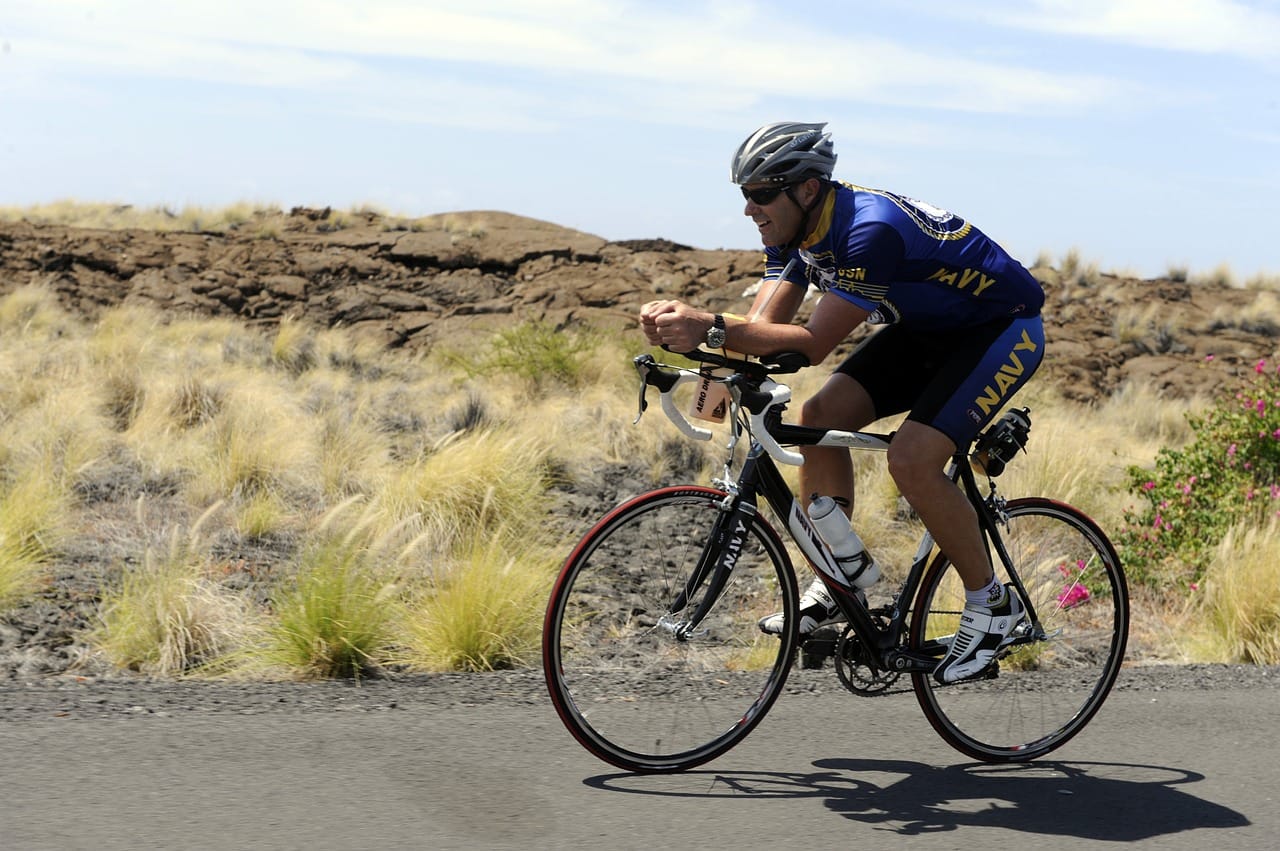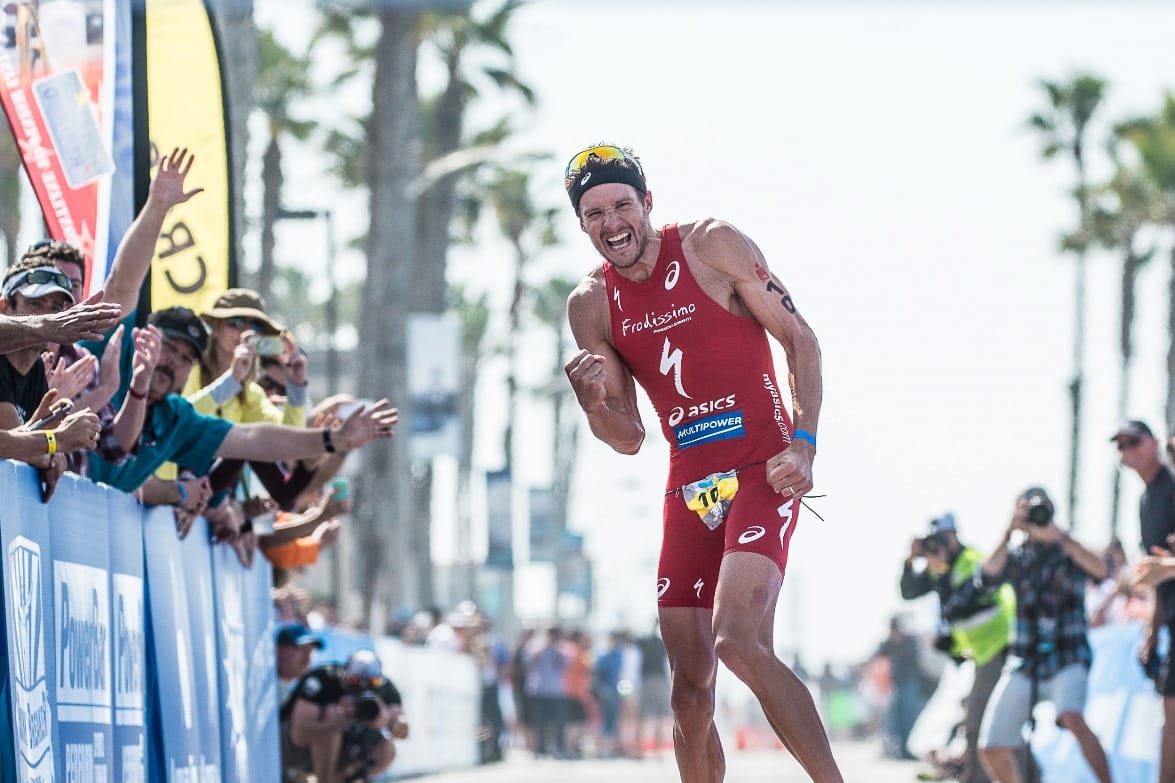A good bike set-up will help you get to the finish line on race day while looking smart at the same time. Normally I’m banging on about bike fit and bike tech, but today we’re going down a different path. Looking at how people choose to set up their fluids, nutrition and spares on their bikes during a recent walk through a transition area got me thinking – these are high-end race machines, not camels. Which begs the question, why do people persist in jamming about nine kilograms of gear on their beautiful seven- kilogram carbon masterpiece and when did electrical tape become the solution to attaching things to your bike?
What to attach to your bike
In this article, I’ve listed all the stuff you might want to attach to your machine on race day and I’ve tried to give you the advantages and disadvantages for each option. Most of this advice is slanted towards long course. For the short course folks, a water bottle will suffice. You can include a small flat tyre changing kit if you want but, let’s face it, if you flat in a sprint, your chance of a PB is over. However, you might as well change the tyre and finish the day as a training run.
Before you start putting stuff all over your bike, sit down, pour yourself a neat scotch and consider what the aid stations will provide that you don’t need to cater for. For many long-course races, the aid stations (situated every 20-to-30 kilometres) will have water, coke, some kind of sports drink, gels, cookies, bananas, snakes and possibly even quarter pounders (OK, no quarter pounders). So, if you have the chance to practise with the sponsor’s product and it goes down OK, then you can leave a lot of the catering to your friendly aid station. I understand that the truly serious Kona aspirant will not want to leave anything to chance and will likely pack their entire bike ride’s worth of nutrition, but for the middle of packer (or in my case the last of packer) you can rely on the stuff at the aid stations to get you through and just pack a minimal amount of your own stuff. Let’s face it, behind all the marketing, most of the gels and sports drinks are basically water, sugar and salt, so as long as you put some of that in the tank, you’ll be fine.
In an ideal world, we’d all pack a spare bike in our spares kit in case something mechanical goes wrong. In practice, about all we can cater for are a single flat tyre, a multi-tool (bars and seat posts can slip) and maybe a quick link if you are really paranoid (and I’m constantly really paranoid). But that’s about it. Even for a long-course race you have to draw the line somewhere on just how much spare crap you are going to take. Lastly, before you attach anything to your bike, fit the race number first. The reason for this is that there is usually only one place it can go, so it’s a case of fit the race number (usually stuck around the seat tube/post) and then go fit everything else around that. For the short folks – sorry, you just don’t have as much space to store stuff – either grow taller or deal with it.
So, now your race number is attached and you’re all excited, let’s review the options for where to put the rest of your stuff.
Fluids
You have three choices here: on the aero bars, bottle cages on the frame or hung off the back of the seat. I’ve listed a few considerations for each.
- Try and keep your bottle requirements to two or less; nobody needs three but I’ve seen as many as five attached to one bike. Get a grip and make use of the aid stations – two or less.
- Bottles attached to the aero bars will leak product all over the front of your bike, bar tape and Garmin; there is no solution to this. You can either use the vertical bottles (Profile Design/TorHans) and get poked in the eye with the straw or you can mount a conventional cage with zip ties (or use the outrageously priced XLab) and struggle with getting the bottle in and out every time you want a drink.
- Bottles attached to the framework pretty well but the newer tri bike designs are generally going with only a single bidon point.
- Bottles attached to the rear of your seat will eject from time to time. NASA could not solve this problem so try whatever combination of bottles and cages you like and then get used to spitting the odd bottle.
Food (gels and bars)
The bento box has been keeping triathletes fat since 1984, but it’s still one of the most practical and simple ways to pack that picnic lunch and your power bars.
- Don’t forget your back pockets for food storage. If you want a bit of extra storage and also avoid the ‘hottie stripe’ sunburn across your back, then consider a cycling jersey instead of a tri top. You can put it on after the swim with food and spares already loaded into the pockets.
- Cut the bars up into bite-size pieces. I find that I use more energy chewing those bars than I actually get from them…
- Don’t stick your gels to your top tube, this went out with Frogskins and pink blazers. Granted, Frogskins have made a comeback, but leave the blazer and top tube taped gels back in the ’80s where they belong.
- You can fit about five gels into a small gel flask, which is a great way to avoid having to tape them to your top tube. Just remember, if it’s a cold day, always store the gel flask upside down in your pocket or bento box otherwise you’ll be waiting several hours for the gel to drip out of the flask when you want to eat some. Also, remember to close the gel flask after each use.
Spares
You have a few options for where to store your spares. Some of the manufacturers (Specialized and Trek) are now making purpose-built spares containers that integrate with the bike frame. For everyone else, there is the good ol’ saddlebag, the stash bottle or electrical tape. If you’re on clinchers then you can fit the entire change kit and multi-tool in either a stash bottle or saddlebag.
- Always use CO2 for inflation, always. Pumps have been banned by the UN under the ‘Not Cool’ convention that came into effect last decade.
- If you’re on tubbies, make sure you get all the air out of your spare before you roll it up; it will compress much smaller this way.
- Double-sided velcro is an acceptable alternative to electrical tape to store your tubbie under your saddle.
- Your kit should include one tubbie or two inner tubes, one CO2 system and two cylinders, one tyre lever and one multi-tool. All this can be organised into a single bundle and hopefully, you never need any of it.
Other stuff
Other stuff includes stuff that those of us who like to think outside the box, or fall into the doomsday preppers category, like to pack. It’s not necessary but, much like my teddy bear, makes me feel secure.
- The mother of all multi-tools. I pack the Multi9000 with chain breaker, torque wrench and cutting/facing options included. I could build an entire fleet of tri bikes with this sucker if I needed to. I’ve never used this tool in anger, but still.
- Twenty dollars. It’s small, light and accepted everywhere. I might have deployed my $20 at Bakers Delight during a particularly arduous IM bike leg for a passionfruit and custard pull apart, or I might not have done this.
- A bit of spare chamois lube under the tip of the saddle. For those unexpected chaffing incidents that just ‘pop up’ midway through the bike leg.
- And lastly…get one of those really cool Garmin mounts that put the thing out in front of you. Yes, they now make them just for tri bars.
In summary – keep it neat, keep it minimal and use the aid stations.








